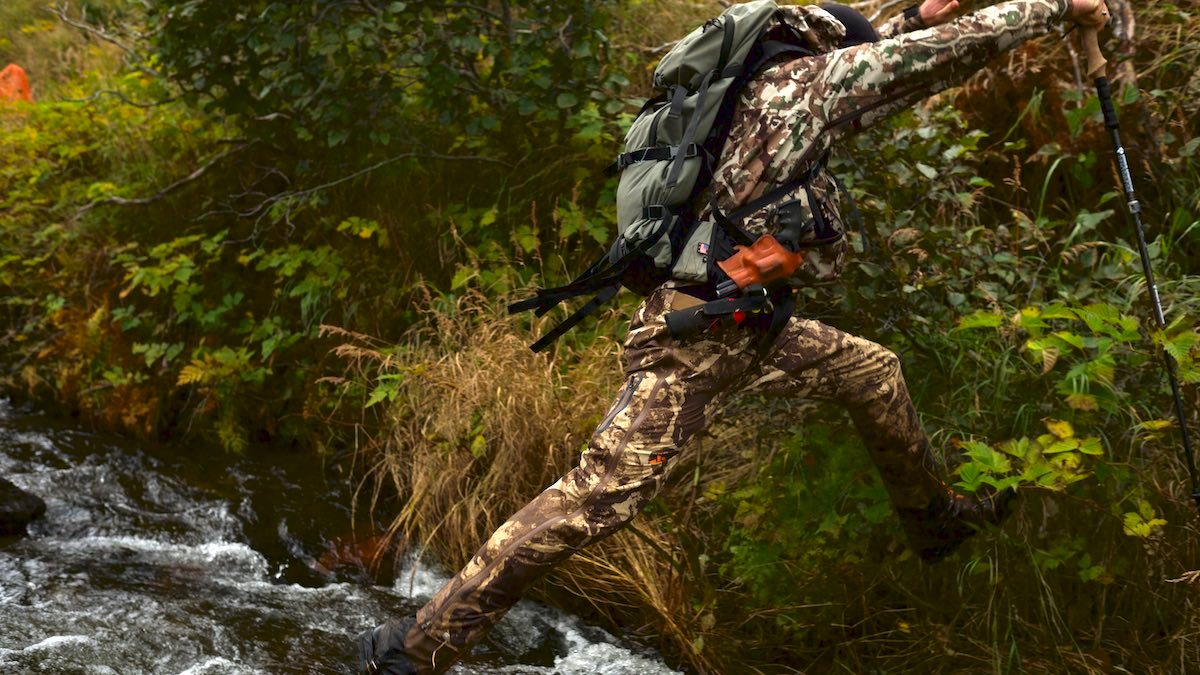
You’ve got questions. We’ve got answers (and if we don’t, we’ll make them up). Every day, fellow MeatEaters send us more than 100 emails regarding hunting, fishing, cooking, conservation, and more. So, we decided to publish a series dedicated to our favorite FAQs. This is Ask MeatEater.
I have friends in Alaska who carry just a 9-iron golf club on hikes for brown bear protection. Now, I’m not suggesting this is a perfect solution; I only want to demonstrate that outdoors people have widely varying comfort levels around the world’s largest bear species. The psychological aspect of hunting, fishing, and hiking in proximity to an objectively frightening animal is likely the biggest hurdle to overcome. If your means for self-defense helps you feel more comfortable, then it is useful for that reason alone. You’ll be more likely to carry it, practice with it, and be ready to use it.
Most of the time when I’m hunting in grizzly bear country, I carry bear spray on the left hip strap of my backpack and a .357 Magnum revolver holstered on the right side of my binocular harness, resting against my ribs. Whichever hand is free has a weapon in reach. I’ll admit it: The pistol makes me feel more comfortable, as though I could meet deadly force with deadly force. In dense vegetation, I’ll often walk with my right hand lightly resting on the hilt on the gun. But I also wouldn’t claim to be a crack shot much past 10 yards with ass-kicking, 200-grain, hollow-point bear loads. Some would say that a .357 Mag doesn’t have enough stopping power for a griz, and I would say that it’s the gun I own so it’s the gun I carry. Sure, a .44 Mag or 10mm would be even better.
Still, I’m a believer in science and statistics, and both clearly show a higher survival rate when people attacked by bears deploy spray over pistols. But no bear encounter is predictable or formulaic, there’s certainly value in both options.
Bear spray doesn’t require steady nerves and solid aim; you can spray it and wave it and it’s likely that some will get in the eyes and nose of a charging bear. As someone who has gotten a light mist of bear spray in his eyes, I can tell you it’s all sorts of unpleasant. Always keep the wind in mind with bear spray, because a headwind could render you helplessly blinded instead of the bear. However, there are examples of full-charge grizzlies running straight through a cloud of pepper spray to tackle a hunter. At such close range and full-tilt speed, I’d rather make that bear dead instead of disoriented. But if at all possible, I’d much rather not kill a grizzly—especially a sow with cubs—unless it absolutely came down to that.
Much of Montana does not yet contain grizzlies. In those areas I’ll often forego the firearm. However, many of those places are home to black bears, moose, and mountain lions. I’ve never yet had a single grizzly behave aggressively toward me, but I have had a black bear charge me, a bull moose at close range stomping the ground with his ears laid back, and found sign on two occasions showing that a mountain lion had stalked me without my knowledge. Griz are by no means the only dangerous animal out there.
By the numbers, I spend more days fishing and fishing-related hiking in grizzly country than hunting. In densely bear-populated areas I will carry the pistol, or sometimes my shotgun loaded with slugs across my back, but more often than not I’ll stick with just the spray. It’s much easier to carry with the hip pack and backpack I use for fishing and I don’t have to risk getting my nice revolver wet. That said, it probably wouldn’t be a bad idea for me to come up with a chest holster system in order to carry both the way I do while hunting.
Whether it be firepower, pepper cloud, or 9-iron, your weapon is only as good as your comfort and familiarity with it. Practice. Most lethal bear attacks are sudden and unpredictable, reducing you and me to our lizard brain only capable of flight, fight, or fright. Your reaction will revert to muscle memory—so make sure your muscles know what to do.
Check out this video to learn more about the specific bear protection gear the MeatEater crew wears.
Featured image by Chris Gill.




